| DROPPED OBJECTS INSPECTIONS |
Dropped Objects are among the top 10 causes of Fatality and Serious Injury in the Oil and Gas Industry; at the same time, inadequate management of potential dropped objects may cause severe damage to assets and property.
Arteak provides Dropped Objects Surveys services for drilling companies and other industries facing similar problems (e.g. construction, lifting, logistics, et cetera), with the ultimate goal of dropped object prevention.
We conduct surveys and prepare reports up to internationally recognized best practices and common guidelines, ensuring any potential dropped object is identified, assessed and recorded such that control measures implemented within the Client’s Asset Management System.
Our qualified IRATA rope access technicians ensure reduction of time, risks and costs required for the completion of exhaustive inspections in difficult locations, furthermore our approach is practical and pro-active, so that we can directly solve as many issues as possible, reducing the amount of failed items that require further actions for closure.

| RIGGING & LIFTING |
As specialists with vast experience in the rope-access industry, Arteak provides specialized rope-access services which can be used for special lifting and rigging projects, (offshore) flare-tip replacement, load tests, offshore crane replacement and offshore installations.
Trained up to OPITO Stage 3 / Stage 4, specialized rope access teams are used to work with recognized industry standards and methods of handling a variety of loads. As a result of their ample experience in these areas, the team members can easily adapt to changing situations.
The team works close with client’s structural engineering department, to develop complex and non-routine lifting plans and provide solutions in the most challenging projects.

| NON-DESTRUCTIVE TESTING |
Rope access NDT Services allows our highly trained and certified technicians to gain access to even the most difficult areas, performing careful examination inspections of a variety of structures.
This allows our inspectors to provide the most accurate, actionable information possible, allowing client to perform any necessary repairs or maintenance to maximize performance and increase safety above all else.
Arteak is well-versed in a wide range of NDT testing methods, including but not limited to the following that our trained and certified personnel perform from suspended access:
Visual Inspections
Magnetic Particle Testing
Radiography
Eddy Current
Liquid Penetrant
Ultrasonic Testing

| RENEWABLE ENERGY |
The current global demand for clean energy has resulted in rapid growth in the renewable energy sector.
Coupled with this drive is the increase of wind turbines that are often situated in remote locations, predominately inaccessible to other access methods.
Industrial rope access offers a safe, cost effective and flexible access method to enable regular maintenance and repair tasks for these structures, such as
Wind turbine blade inspection & repair
Maintenance
Painting
Cleaning

| NATURAL ENVIRONMENT |
Cliffs and high rocks are rarely in a position where semi-permanent access can be employed. Natural wear and tear, the sea and weather erosion can present problems that must be addressed.
Rope access teams have worked on many large-scale sites in several continents where the stabilisation work undertaken has preserved cherished historic views, maintained roadways and even kept substantial land masses from being lost forever.
The sports and tourist industry, which is sometimes more ready than other industries to support rope access methodology, have benefited significantly from their willingness to explore rope access solutions.
Long established road and rail embankments works are seldom completed without the use of rope access.

| CIVIL CONSTRUCTION |
Modern structural designs are becoming more extravagant and, of course, constructing to great height is increasingly common. All this is of little concern to an efficient rope access team who can move around the most complex of structures by means of their ropes alone and can either carry the necessary tools with them or use another rope system to deliver them to the required position.
There are occasions where one particular part of a major structure is impossible to reach by the method being used for the other parts. In such cases, the need to devise a major additional means of access can be prevented by the introduction of rope access.
Other reasons for the growth of rope access use is that other means of access have suffered some safety reversals; and that many new building designs have shapes or features that cannot be easily cleaned or inspected by traditional means. Furthermore, the growing trend of extremely tall building design means that most static access methods are impractical or unusable.

| SHIPYARD & HARBOURS |
Harbours are often where large constructions projects are undertaken to support the offshore sector and rope access is widely used for works on derricks and similar creations. Rope access can often be seen in use on large ships whilst they are in harbour.
Painting and inspection work can be carried out above the water line whilst the vessel is in port and even between tides if this is a factor. Additionally, the inspection and repair of deep locks can also be undertaken in short time, thus minimising the time such a facility is out of commission.
Industrial rope access is at home on unusual structures and can achieve set-up and dismantling times that no other means of access can rival. Because of its swift set-up and dismantle times, work can often be undertaken by rope access means in a time scale that avoids any disruption to the normal work carried out at the worksite.

| POWER & PETROCHEMICAL |
The absence of cumbersome access equipment enables rope access companies to become work solution providers at power stations, refineries and storage depots where the low spark/ignition issue can also determine a decision in favour of rope access systems.
Where large access vehicles or structures might have insufficient room or perhaps hinder other work, a rope access team can move around such locations without disruption to non-related tasks; there can often be a situation where a rope team can access their work position from above an industrial scene and therefore not require floor access at all.
Work undertaken can range from basic inspection and minor repair to substantial maintenance, decommissioning and replacement of structure or equipment.

| Offshore oil & gas |
Industrial rope access began its life by providing teams to inspect, maintain, repair and renovate the offshore platform.
This was in answer to the companies operating these rigs who had found other means of access to be of limited use in the offshore environment, with their structures and machinery taking up too much of the limited space available; and at times prejudicing the whole safety regime of the rig, including emergency evacuation.
Discovering that workers on ropes were able to reach areas of the platform that it was impossible or, at best, very costly to get to by other access means, owning companies turned to contract rope access specialists for ever more detailed and specialist work. Some of these tasks have involved ground-breaking procedures that have either substantially reduced the time required for the work to be completed, extended the life of the rig, or its parts, or enabled rigs to be altered or repaired without returning to shallow water.

